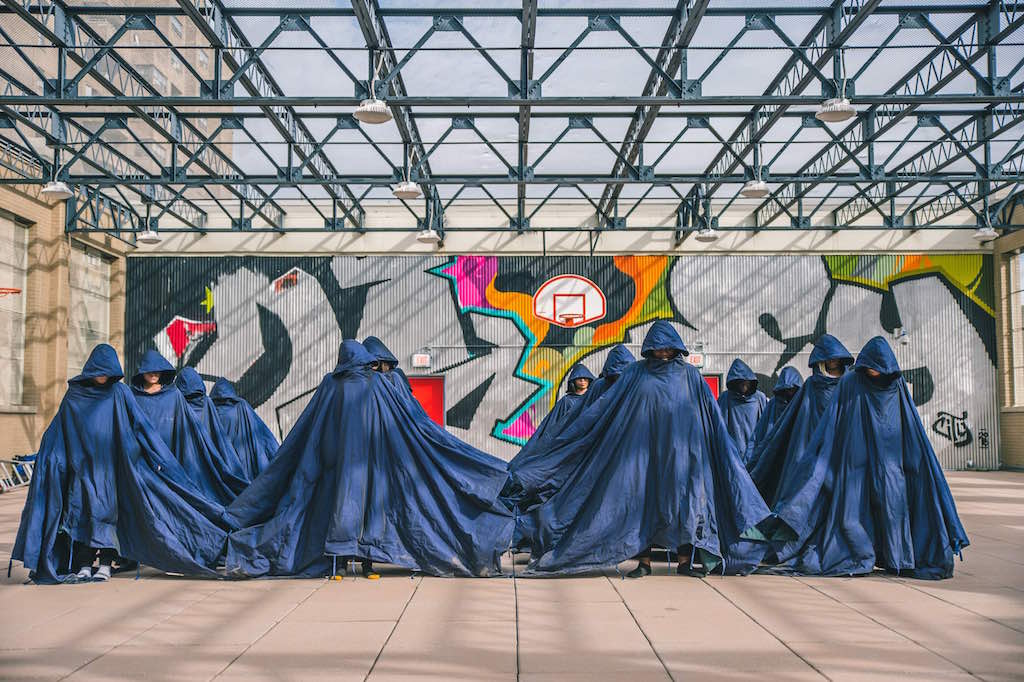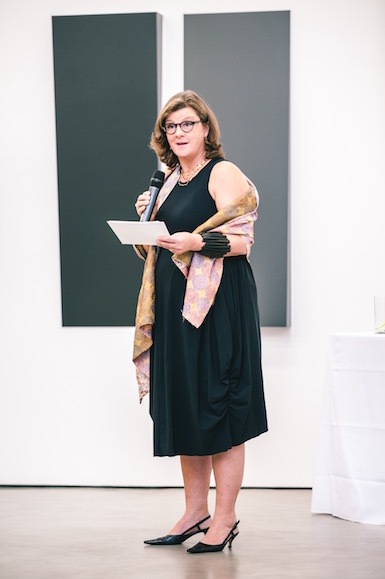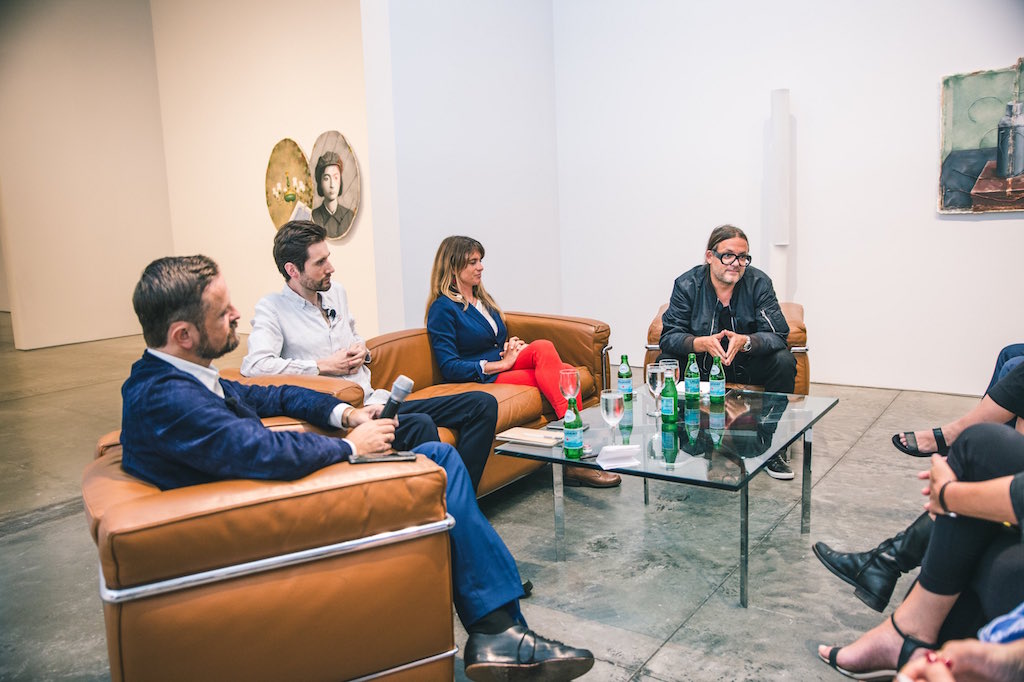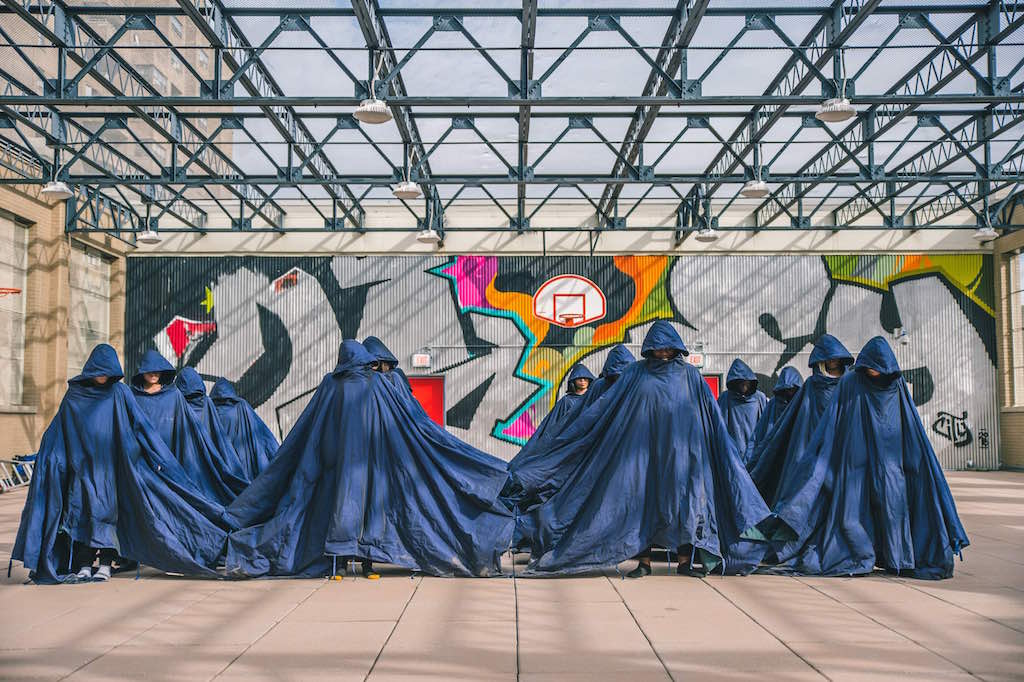[ad_1]

Lilibeth Cuenca Rasmussen & ART 2030, Tow with the Flow, New Design High School, New York, 2018.
LEES FOTO/COURTESY ART 2030
“If we discuss, we reflect—and when we reflect, we take a stand.” So goes an impassioned refrain favored by Luise Faurschou, the founder and director of the Copenhagen-based activist organization Art 2030.
The main focus of her reflection is a set of 17 internationally aligned Sustainable Development Goals established by the United Nations in 2015 with an aim toward various forms of implementation by the year 2030. As presented on the UN’s website, the goals provide a “blueprint to achieve a better and more sustainable future for all. They address the global challenges we face, including those related to poverty, inequality, climate, environmental degradation, prosperity, and peace and justice.”
Faurschou, who ran a namesake gallery for more than 20 years and after that a foundation and a curatorial/advisory enterprise called Faurschou Art Resources, established Art 2030 last year to try to forge links between the realms of art and policy. “I can connect the art world to this agenda,” she told ARTnews while in New York last week, “out of a deep belief that art is such a unique space for discussion.”
Faurschou was in the city for the first iteration of Art 2030 New York, a series of events coinciding with the meeting of the UN General Assembly that she plans to make an annual happening. The program included public installations and performances as well as panel discussions on issues taken up by the UN goals, among them gender equality, climate change, and education.

Luise Faurschou at Lisson Gallery.
LEES FOTO/COURTESY ART 2030
“We can’t solve everything, but what we can do—and what, in my opinion, is crucial—is raise discussion,” Faurschou said. “We all need to do something. The world is at a place where we all have to engage, and the Sustainable Development Goals is the best plan I can find. You can do it on a business level and an NGO level, but also on an individual level. I really believe it’s a plan for people, the planet, and prosperity, and there is a way of reaching it—but we all need to engage.”
For New York, Art 2030 commissioned Danish artist Lilibeth Cuenca Rasmussen to stage a performance with sustainable consumption as a subject. For Tow with the Flow, she partnered with students of the New Design High School (the site for the piece, on Manhattan’s Lower East Side) in acts of collecting, sharing, and dressing in a manner meant to critique the practices of the globalized textile industry. The piece was an example of ways that Art 2030 can work, Faurschou said: “It’s beautiful and appealing, yet you go home thinking.”
A central part of the week was a series of panel discussions at big galleries in Chelsea: Gagosian, Pace, David Zwirner, and Hauser & Wirth. “We reached out to the strongest voices and asked them to be frontrunners,” Faurschou said. “We hope that more galleries will be joining the initiative next year, but to set the agenda from the beginning we reached out to the leaders of the sector.” Other galleries in the neighborhood participated by way of staying open late for panelgoers strolling by, including 303 Gallery, Cheim & Read, Galerie Lelong & Co., Gladstone Gallery, James Cohan, Lisson Gallery (which also hosted a party), Luhring Augustine, Metro Pictures, Petzel, and Tina Kim Gallery.
On Monday, September 24, Gagosian hosted a panel at its West 24th Street location about gender equality and art moderated by Johanna Burton, the director and curator of education and public engagement at the New Museum, and featuring Ulla Tørnæs, the Danish minister for development cooperation; Cameron Saul, the founder of sustainable brand Bottletop; and artist Mary Weatherford, whose striking paintings on view at the gallery made for a dramatic backdrop.
After Burton posed the question “How are we defining gender equality?,” the responses were more or less predictable: equal pay for equal work, attention to issues related to women’s health, women’s right to choose, and opportunities for education and work. Much of the panel proceeded in a well-intentioned but somewhat trite manner, though Weatherford was engaging in her candor while conceding she was “out of my depth talking globally.” She went on to explain that the self-possessed “I” in the title of her current show—“I’ve Seen Gray Whales Go By”—is “important in terms of what we’re talking about as women artists.”
“I take space and bring people with me, and that’s what I’m trying to do,” the artist continued. Holding up a copy of Ninth Street Women, Mary Gabriel’s new book about Lee Krasner, Elaine de Kooning, Grace Hartigan, Joan Mitchell, and Helen Frankenthaler, she said, “I’m about to start reading this.” (It’s worth noting that only 13 percent of Gagosian’s solo shows in the last five years featured women artists.)

The “Art for a Healthy Planet” panel at Pace Gallery.
LEES PHOTO/COURTESY ART 2030
At Pace Gallery on Wednesday, a talk titled “Art for a Healthy Planet” paired moderator Cyrill Gutsch, the founder of Parley for the Oceans—a New York–based “space where creators, thinkers, and leaders come together to raise awareness for the beauty and fragility of our oceans”—with a panel comprising artist John Gerrard, Alex Groves of the artist group Studio Swine, and scientist Sarah-Jeanne Royer. In mind of the UN’s sustainability goals, Gerrard pointedly questioned whether art itself is sustainable, given the ways it has been objectified and commodified in a manner that moves around the planet at great financial and environmental expense. Groves, for his part, talked about his group’s practice, which is geared toward projects like making artwork on the back of fishing boats to tap into the centuries-old legacy of maritime arts. Workers on boats have long made things of all kinds during downtime from pure labor, he said, noting the general handiness and familiarity with weird materials of people at sea.
Gutsch, whose Parley for the Oceans has worked with numerous brands on projects to raise awareness and funds, was the most bullish on the planet’s collective chances of staring at the sun of climate change in a meaningful way. “We can make environmentalism sexy and hot,” he said.
The final event of the week, at Hauser & Wirth’s bookshop, spotlighted Art + Practice, a Los Angeles–based nonprofit founded in 2014 by artist Mark Bradford, activist Allan DiCastro (Bradford’s partner), and philanthropist Eileen Harris Norton (who was one of the first collectors of Bradford’s work). Sophia Belsheim, the director of operations at Art + Practice, spoke at length about the organization’s growth and mission to support the needs of local foster children and present contemporary art programming within L.A.’s Leimert Park, the neighborhood where its 20,000-square-foot campus is located.
“The landscape is changing,” Belsheim told the audience. In 2014, when the organization began, “there was no access to contemporary art in South L.A.” The needle has been moving since, in part due to Art + Practice’s focus on “championing underrepresented artists, particularly artists of color.”
Art + Practice is currently involved in a six-year partnership with nonprofit social service provider First Place for Youth to provide paid internships and training for different kinds of cultural work in the future. The program aims to enable young people to “invest in certain tools so they can take those forward,” Belsheim said.
“I don’t know where the next five years will take us,” she continued, “but I’m hopeful and proud to do the work we do with young people who deserve the world.”
[ad_2]
Source link

